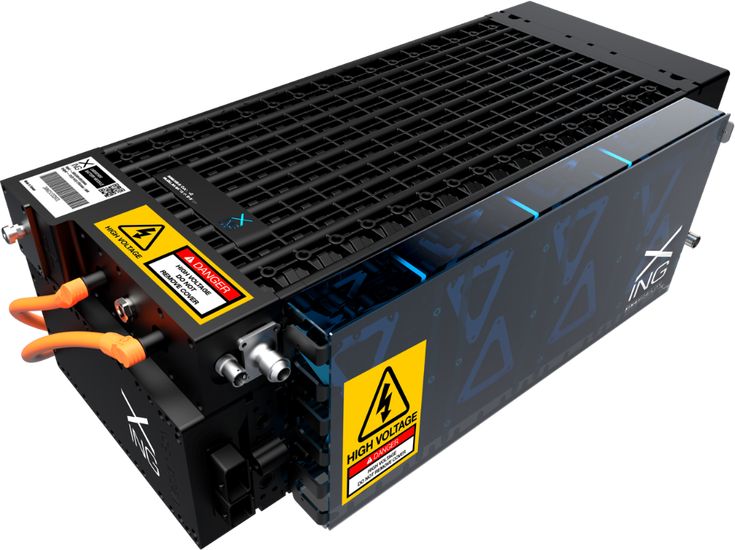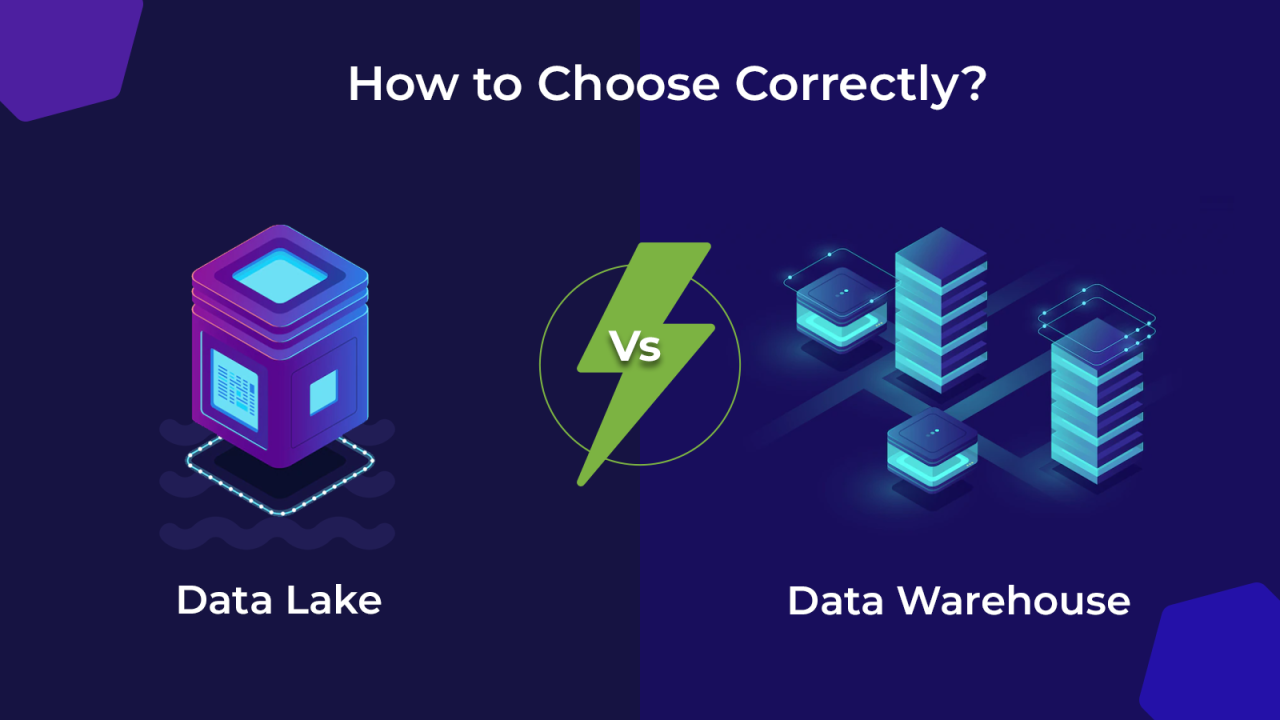In today’s fast-paced digital economy, the ability to instantly access and scale computing resources is no longer a luxury but a fundamental necessity. This is the promise and reality of compute power on demand, a revolutionary paradigm that has fundamentally reshaped how businesses operate, innovate, and grow. Instead of investing in and managing expensive physical servers, organizations can now provision and scale virtual compute resources, from a single virtual machine to vast clusters, precisely when and where they need them. This paradigm, primarily driven by cloud computing, unlocks unprecedented levels of agility, cost-iciency, and scalability, democratizing access to powerful IT infrastructure and fueling a new era of innovation. It’s truly the engine that allows businesses to adapt, expand, and thrive in an ever-fluctuating market, unleashing compute power on demand.
The Evolution of Computing: From Mainframes to Cloud
To fully grasp the transformative impact of on-demand compute, it’s essential to understand the historical journey of computing, recognizing how each era addressed capacity needs and their inherent limitations.
A. The Mainframe Era: Centralized Giants
The earliest large-scale computing involved mainframes, massive, expensive machines that dominated the computing landscape from the 1950s to the 1980s.
- Centralized Processing: All computing tasks were consolidated on a single, powerful machine, serving multiple users via terminals.
- High Capital Investment: Acquiring and maintaining a mainframe required enormous upfront capital expenditure, making it accessible only to large corporations and governments.
- Limited Accessibility: Access to compute resources was highly restricted and managed by a specialized IT department, leading to bottlenecks and slow provisioning.
- Batch Processing Focus: Mainframes were primarily designed for batch processing of large datasets, not for interactive, real-time applications.
- Fixed Capacity: Scaling meant acquiring an entirely new, even larger mainframe, a costly and disruptive process. Compute capacity was a fixed, often over-provisioned, resource.
B. The Client-Server Revolution: Distributed But Static
The rise of personal computers and networking in the 1980s and 90s ushered in the client-server model, decentralizing computing power.
- Dedicated Servers: Businesses acquired their own physical servers for specific functions (e.g., file servers, database servers, web servers).
- Distributed Infrastructure: Compute power was distributed across a network of individual machines, allowing for more tailored solutions.
- Capital Expenditure Remains: While cheaper than mainframes, buying, racking, stacking, and maintaining physical servers still required significant capital investment and operational overhead.
- Capacity Planning Challenges: Organizations had to predict future demand and purchase enough servers to meet peak loads, often leading to over-provisioning (wasted resources) or under-provisioning (performance bottlenecks and outages).
- Manual Management: Managing these servers—patching, updates, troubleshooting, scaling—was largely a manual, time-consuming process, prone to human error.
C. The Virtualization Breakthrough: Unlocking Efficiency
Virtualization emerged in the early 2000s as a crucial stepping stone, abstracting hardware and improving resource utilization.
- Hardware Abstraction: Hypervisors allowed multiple isolated virtual machines (VMs) to run concurrently on a single physical server, effectively partitioning its compute power.
- Improved Resource Utilization: Virtualization significantly increased the efficiency of physical hardware, reducing the number of physical servers needed and optimizing power consumption.
- Faster Provisioning (Internal): While still bound by the underlying physical hardware, provisioning new VMs was significantly faster than acquiring new physical servers, allowing for quicker internal deployment.
- Still On-Premise: Most early virtualization was done on-premise, meaning organizations still bore the full cost and responsibility for managing the physical infrastructure.
- Operational Complexity: Managing a large virtualized environment with hypervisors, VM sprawl, and resource allocation could become complex, requiring specialized skills.
D. The Cloud Computing Paradigm: True On-Demand Power
Cloud computing, building upon virtualization and global internet connectivity, fully realized the concept of on-demand compute.
- Elastic and Scalable: Cloud providers (AWS, Azure, Google Cloud) offer compute resources (VMs, containers, serverless functions) that can be scaled up or down instantly and automatically based on demand.
- Operational Expenditure (OpEx): Instead of large capital outlays, users pay only for the compute resources they consume, shifting from CapEx to OpEx, which is highly beneficial for cash flow and budgeting.
- Abstracted Infrastructure: Users are largely abstracted from the underlying physical hardware, as the cloud provider manages all servers, networking, and data centers.
- Global Reach: Compute resources are available globally, allowing businesses to deploy applications closer to their users for lower latency and better performance.
- Managed Services: Cloud providers offer a vast array of managed compute services, reducing the operational burden on users (e.g., managed Kubernetes, serverless platforms).
This journey highlights a clear trajectory towards greater abstraction, flexibility, and efficiency in how compute power is accessed and utilized.
Core Pillars of On-Demand Compute
The ability to access compute power on demand is built upon several foundational technological pillars that cloud providers have pioneered and perfected.
A. Virtual Machines (VMs) / Infrastructure as a Service (IaaS)
Virtual machines remain the fundamental building block for many on-demand compute scenarios.
- Hardware Emulation: VMs emulate a complete computer system (CPU, memory, storage, network interface) on a hypervisor, allowing them to run their own operating system and applications.
- Isolation and Security: Each VM is isolated from others on the same physical host, providing a secure and stable environment.
- Flexibility: Users have full control over the operating system, installed software, and configurations within their VM, offering maximum flexibility for diverse workloads.
- Instance Types: Cloud providers offer a vast array of VM ‘instance types’ with varying combinations of CPU, memory, storage, and networking capabilities, allowing users to select the exact resources needed for their specific workload (e.g., compute-optimized, memory-optimized, general purpose).
- Rapid Provisioning: VMs can be provisioned in minutes via API calls or web consoles, a drastic improvement over days or weeks for physical servers.
B. Containers and Orchestration (PaaS/CaaS)
Containers offer a more lightweight and portable form of virtualization, leading to even greater efficiency and agility, particularly for microservices architectures.
- Lightweight Isolation: Containers share the host OS kernel but package applications and their dependencies into isolated, portable units. This makes them much more lightweight than VMs, with faster startup times.
- Portability: A containerized application runs consistently across any environment that supports containers (developer’s laptop, on-premise server, any cloud provider), eliminating ‘it works on my machine’ issues.
- Resource Efficiency: Containers consume fewer resources than VMs, allowing more applications to run on the same underlying hardware.
- Container Orchestration: Tools like Kubernetes (and managed services like AWS EKS, Azure AKS, Google GKE) are essential for managing, deploying, scaling, and networking large numbers of containers across clusters of virtual or physical machines. This automation is key to on-demand scalability for containerized applications.
C. Serverless Computing (Functions as a Service – FaaS)
Serverless computing represents the highest level of abstraction for on-demand compute, where users focus solely on code, completely abstracting the underlying servers.
- Event-Driven Execution: Code (functions) only executes in response to specific events (e.g., an API request, a database change, a file upload, a scheduled timer). There are no idle servers.
- Automatic Scaling to Zero: The cloud provider automatically scales the functions up from zero instances to handle massive traffic spikes, and then scales them back down to zero when not in use, ensuring extreme cost efficiency for intermittent workloads.
- No Server Management: Developers are entirely absolved from provisioning, patching, scaling, or maintaining any servers. The cloud provider handles all operational aspects.
- ‘Pay-Per-Execution’ Billing: Users are billed only for the actual compute time consumed during function execution (typically in milliseconds) and the number of invocations, making it incredibly cost-effective for bursty or low-volume workloads. Examples include AWS Lambda, Azure Functions, Google Cloud Functions.
D. Specialized Compute Accelerators
Beyond general-purpose CPUs, cloud providers offer specialized hardware for specific, highly demanding workloads.
- GPUs (Graphics Processing Units): Essential for machine learning training, AI inference, and scientific simulations due to their massive parallel processing capabilities. Cloud providers offer instances with powerful GPUs on demand.
- TPUs (Tensor Processing Units): Google-designed ASICs (Application-Specific Integrated Circuits) specifically optimized for machine learning workloads, particularly neural network computations. Available on Google Cloud.
- FPGAs (Field-Programmable Gate Arrays): Reconfigurable hardware that can be programmed to perform specific computations extremely efficiently, useful for custom algorithms or highly optimized data processing.
- Quantum Computing: While still in nascent stages, some cloud providers offer access to quantum computers or quantum simulators as a service, allowing researchers to experiment with this cutting-edge compute paradigm on demand.
These diverse compute options provide the flexibility and power needed to address virtually any workload requirement in an on-demand fashion.
Transformative Advantages of On-Demand Compute
The shift to on-demand compute offers a multitude of profound benefits that redefine operational models and competitive strategies across all industries.
A. Unparalleled Agility and Speed to Market
The ability to provision resources instantly transforms the pace of business.
- Rapid Experimentation: Developers and data scientists can spin up environments for new ideas, test hypotheses, and build prototypes in minutes, drastically accelerating the innovation cycle.
- Faster Deployment: New applications and features can be deployed rapidly, sometimes multiple times a day, responding quickly to market changes and customer feedback.
- Reduced Bottlenecks: Eliminates the delays associated with traditional hardware procurement and setup, ensuring that IT infrastructure never holds back business initiatives.
- Increased Developer Productivity: Developers spend less time managing infrastructure and more time writing code that delivers business value.
B. Significant Cost Optimization and Efficiency
On-demand compute fundamentally changes IT economics from large upfront capital expenditures to flexible operational costs.
- ‘Pay-as-You-Go’ Model: Users pay only for the compute resources they actually consume, eliminating the need to over-provision for peak loads and pay for idle capacity. This is especially impactful for variable or unpredictable workloads.
- Reduced Capital Expenditure (CapEx): No need to buy, maintain, or depreciate physical servers, freeing up capital for core business investments.
- Lower Operational Costs (OpEx): Cloud providers handle the heavy lifting of data center management, power, cooling, and hardware maintenance, significantly reducing operational overhead for users.
- Resource Right-Sizing: The flexibility to scale up or down ensures that resources are always optimally matched to current demand, preventing wasteful spending on underutilized hardware.
C. Infinite Scalability and Elasticity
The core promise of on-demand compute is the ability to scale virtually limitlessly, automatically adapting to demand fluctuations.
- Automatic Scaling: Automated mechanisms (e.g., auto-scaling groups, serverless functions) instantly add or remove compute instances based on real-time metrics (CPU utilization, request queue length), ensuring consistent performance during traffic spikes.
- Global Reach: Deploying applications and compute resources in multiple geographical regions allows businesses to serve global audiences with low latency and comply with data residency requirements.
- Handling Unpredictable Workloads: Ideal for seasonal businesses, flash sales, viral events, or scientific simulations that require massive, short-term bursts of compute power that would be impossible to manage with fixed on-premise infrastructure.
D. Enhanced Reliability and Resilience
Cloud providers design their infrastructures for extreme reliability and fault tolerance, benefiting all users of on-demand compute.
- Built-in Redundancy: Resources are distributed across multiple Availability Zones and Regions, ensuring that failures of individual components or even entire data centers do not lead to application downtime.
- Automated Failover: Managed services often include automatic failover capabilities, seamlessly shifting workloads to healthy instances in the event of a failure.
- Disaster Recovery: Entire application environments can be quickly re-provisioned in different regions from code, simplifying and accelerating disaster recovery efforts.
- Predictive Maintenance: Cloud providers leverage vast data to perform predictive maintenance on their underlying hardware, proactively replacing components before they fail, contributing to overall system stability.
E. Focus on Core Business and Innovation
By abstracting away infrastructure management, on-demand compute allows businesses to focus their valuable resources where they matter most.
- Reduced IT Burden: IT teams spend less time on mundane infrastructure tasks (patching, hardware maintenance, capacity planning) and more time on strategic initiatives that drive business value.
- Empowering Developers: Developers can self-provision the compute resources they need for their projects without waiting for IT, accelerating development cycles.
- Accelerated Innovation: The ease of experimentation and rapid deployment fosters a culture of innovation, allowing businesses to test new ideas quickly and bring groundbreaking products and services to market faster.
- Access to Advanced Technologies: Cloud providers offer easy, on-demand access to cutting-edge technologies like AI/ML accelerators (GPUs, TPUs), quantum computing, and specialized databases, democratizing advanced compute capabilities for organizations of all sizes.
Challenges and Considerations in Adopting On-Demand Compute
While the benefits of on-demand compute are compelling, its adoption is not without challenges. Organizations must navigate these complexities to ensure successful implementation and optimization.
A. Cost Management and Optimization (FinOps)
While ‘pay-as-you-go’ can be cost-effective, managing cloud spend can quickly become complex, leading to unexpected bills if not properly managed.
- Lack of Visibility: Understanding exactly what resources are consuming costs, and attributing those costs to specific teams or projects, can be challenging without proper tagging and monitoring.
- Sprawl and Idle Resources: Easy provisioning can lead to ‘resource sprawl’ where unneeded or idle instances continue to incur costs if not de-provisioned.
- Complex Pricing Models: Cloud providers offer various pricing models (on-demand, reserved instances, savings plans, spot instances) which, while offering flexibility, can be complex to navigate and optimize for different workloads.
- FinOps Maturity: Implementing FinOps (Cloud Financial Operations) practices requires a cultural shift and dedicated expertise to continuously monitor, optimize, and forecast cloud costs across finance, operations, and development teams.
B. Security and Compliance in the Cloud
While cloud providers offer robust security of the cloud, customers are responsible for security in the cloud.
- Shared Responsibility Model: Understanding and managing the shared responsibility model for security with the cloud provider is crucial to prevent misconfigurations and breaches.
- Identity and Access Management (IAM): Properly configuring granular IAM policies to ensure least privilege access to compute resources is complex but critical.
- Network Security: Designing secure VPCs, subnets, security groups, and network ACLs to isolate compute workloads is paramount.
- Data Protection: Ensuring data encryption at rest and in transit, and managing data residency requirements, adds complexity.
- Compliance: Meeting specific industry regulations (e.g., HIPAA, PCI DSS, GDPR) requires careful design and configuration of compute services.
C. Vendor Lock-in and Multi-Cloud Strategy
Committing to a single cloud provider can lead to vendor lock-in, making it difficult and costly to migrate workloads later.
- Proprietary Services: Cloud providers offer unique services that, while powerful, are proprietary. Deep reliance on these can hinder portability.
- Migration Costs: Moving applications and data between cloud providers can be expensive, time-consuming, and technically challenging.
- Multi-Cloud Complexity: Adopting a multi-cloud strategy to avoid lock-in introduces its own complexities in terms of management, networking, security, and consistent tooling across different cloud environments.
D. Skill Gap and Talent Shortage
Operating in a dynamic, on-demand cloud environment requires new skills.
- Cloud Native Expertise: Teams need expertise in cloud-native architectures, containerization (Kubernetes), serverless computing, and Infrastructure as Code (IaC).
- DevOps and SRE Skills: A strong understanding of DevOps principles, Site Reliability Engineering (SRE) practices, and automation is crucial.
- Security Expertise: Security professionals need to understand cloud-specific security models and tools. The shortage of talent with these skills can hinder adoption and optimization.
E. Performance Optimization and Latency Management
While on-demand compute offers scalability, ensuring optimal performance and managing latency for global users requires careful design.
- Network Latency: For geographically dispersed users, placing compute resources closer to them (e.g., using regional deployments, edge computing) is crucial.
- Service Interdependencies: In microservices architectures, managing latency and performance across numerous inter-dependent compute services can be complex.
- Workload Optimization: Identifying the right compute instance types, configuring them correctly, and optimizing application code for cloud environments is essential for cost-effective performance.
F. Monitoring, Logging, and Troubleshooting
In dynamic, distributed cloud environments, gaining visibility into compute resource performance and troubleshooting issues can be challenging.
- Distributed Observability: Collecting, aggregating, and analyzing logs, metrics, and traces from thousands of virtual instances or ephemeral serverless functions requires robust observability platforms.
- Alert Fatigue: Setting up too many alerts can lead to ‘alert fatigue,’ causing teams to miss critical issues.
- Complex Diagnostics: Tracing issues across multiple compute services, managed databases, and networking components in a multi-cloud or hybrid environment can be complex.
Best Practices for Leveraging On-Demand Compute
To maximize the benefits of on-demand compute and effectively navigate its challenges, organizations should adhere to a set of proven best practices, integrating strategy, technology, and culture.
A. Embrace a Cloud-Native First Mindset
When building new applications or modernizing existing ones, adopt a cloud-native first mindset. Design applications to fully leverage cloud-native services (managed databases, message queues, serverless functions, container orchestration). This maximizes the benefits of elasticity, scalability, and operational efficiency inherent in on-demand compute, rather than simply ‘lifting and shifting’ monolithic applications without optimization.
B. Implement Infrastructure as Code (IaC)
Define all your compute resources and their configurations using Infrastructure as Code (IaC) tools (e.g., Terraform, AWS CloudFormation, Azure Resource Manager). This ensures:
- Consistency: Environments are provisioned identically every time, eliminating configuration drift.
- Repeatability: You can easily recreate environments (e.g., for development, testing, disaster recovery).
- Version Control: Track all changes, enable rollbacks, and facilitate collaboration on infrastructure.
- Automation: Rapidly provision and de-provision compute resources as needed, fully embracing the ‘on-demand’ nature.
C. Design for Scalability and Elasticity from Inception
Build your applications to be inherently scalable and elastic.
- Statelessness: Design application components to be stateless, externalizing session or state information to distributed databases or caches. This allows for easy horizontal scaling.
- Microservices/Serverless: Break down applications into smaller, independently scalable microservices, or leverage serverless functions for event-driven, bursty workloads.
- Auto-Scaling: Configure auto-scaling groups for virtual machines or container orchestration platforms to automatically adjust compute capacity based on demand metrics (CPU utilization, queue length).
D. Prioritize Cost Optimization (FinOps Culture)
Implement a robust FinOps culture to continuously manage and optimize cloud spending.
- Tagging Strategy: Implement a consistent and detailed tagging strategy for all compute resources to track costs by project, team, environment, etc.
- Right-Sizing: Regularly review compute resource utilization and right-size instances to ensure you’re not overpaying for idle capacity.
- Pricing Model Optimization: Leverage reserved instances or savings plans for predictable, long-running workloads, and spot instances for fault-tolerant, interruptible workloads to achieve significant cost savings.
- Automated Shut-downs: Implement automation to shut down non-production compute resources during off-hours to reduce unnecessary spend.
E. Focus on Security from the Ground Up (DevSecOps)
Embed security into every stage of your compute lifecycle.
- Least Privilege IAM: Grant compute instances and users only the minimum necessary permissions (least privilege) through granular IAM policies.
- Network Segmentation: Design secure Virtual Private Clouds (VPCs) with private subnets, security groups, and network ACLs to isolate compute resources and control traffic flow.
- Automated Security Scanning: Integrate security tools into CI/CD pipelines to scan code, container images, and IaC templates for vulnerabilities and misconfigurations before deployment.
- Continuous Monitoring: Implement robust logging, monitoring, and alerting for all compute activities to detect and respond to security threats in real-time.
F. Build for Observability and Automation
You can’t optimize what you can’t see.
- Comprehensive Monitoring: Collect metrics (CPU, memory, network I/O, application performance) from all compute instances.
- Centralized Logging: Aggregate logs from all compute resources into a centralized logging platform for analysis and troubleshooting.
- Distributed Tracing: Implement distributed tracing to track requests across multiple compute services in complex applications, pinpointing performance bottlenecks or errors.
- Automated Remediation: Implement automated runbooks and playbooks to respond to common operational issues or security incidents, reducing manual intervention.
G. Plan for Multi-Cloud or Hybrid Cloud (if necessary)
If a multi-cloud or hybrid cloud strategy is essential for your business (e.g., for compliance, resilience, or avoiding vendor lock-in), plan for its complexities from the outset.
- Abstraction Layers: Use tools and platforms that provide abstraction layers over different cloud providers (e.g., Kubernetes for containers across clouds, open-source IaC tools).
- Consistent Security Policies: Ensure security policies and controls are applied consistently across all cloud environments.
- Network Connectivity: Plan for secure, high-bandwidth connectivity between on-premise data centers and cloud environments, or between multiple cloud providers.
H. Invest in Training and Talent Development
The success of on-demand compute relies on a skilled workforce. Invest continuously in training your IT, development, and operations teams on cloud-native technologies, DevOps practices, cloud security, and FinOps principles. Foster a culture of continuous learning and adaptation to new tools and methodologies.
The Future Trajectory of On-Demand Compute
The evolution of on-demand compute is relentless, driven by advancements in AI, the rise of specialized workloads, and an increasing focus on sustainability and sovereign control.
A. Hyper-Specialized Compute and Accelerated Workloads
The future will see an explosion of hyper-specialized compute resources, beyond just general-purpose CPUs, tailored for very specific workloads.
- AI/ML Dominance: Continued innovation in GPUs, TPUs, and specialized AI ASICs, becoming the primary compute engines for AI model training and inference.
- Quantum Compute as a Service: More accessible and powerful quantum computing services on demand, allowing for experimentation and problem-solving in previously intractable domains.
- Neuromorphic Computing: Brain-inspired chips designed for highly energy-efficient AI at the edge, available as a service for real-time sensory processing.
- Genomic and Drug Discovery Accelerators: Specialized hardware for life sciences, capable of rapidly processing vast biological datasets.
B. Pervasive Edge Computing and Distributed Cloud
The demand for lower latency and local processing will push compute power even closer to the data source.
- Ubiquitous Edge Devices: Billions of IoT devices, sensors, and smart appliances will have significant compute capabilities embedded within them.
- Distributed Cloud: Cloud providers will extend their compute services directly into enterprise data centers, factory floors, and retail stores, creating a seamless continuum from the edge to the core cloud.
- 5G and Satellite Connectivity: Ultra-low latency 5G networks and global satellite internet will provide the necessary connectivity to manage and leverage these vast distributed compute resources effectively.
C. Intelligent Automation and Autonomous Operations
AI will not just be a workload on compute, but will actively manage and optimize compute itself.
- Self-Optimizing Infrastructure: AI-driven systems that autonomously monitor, predict, and adjust compute resources (scaling, type selection, placement) for optimal performance and cost without human intervention.
- AI for FinOps: Advanced AI models analyzing cloud spend patterns to recommend complex optimizations, identify waste, and forecast future costs with greater accuracy.
- AIOps for Predictive Maintenance: AI analyzing telemetry from physical compute infrastructure (servers, network gear) to predict failures and trigger proactive maintenance, ensuring higher availability.
D. Sustainability and Green Compute
The environmental footprint of massive compute infrastructure will drive significant innovation in sustainable computing.
- Energy-Efficient Hardware: Continued development of more energy-efficient processors, cooling technologies, and data center designs.
- Renewable Energy Sourcing: Cloud providers will increasingly power their data centers with 100% renewable energy.
- Carbon-Aware Scheduling: Compute workloads being automatically scheduled in regions powered by cleaner energy sources or during times of peak renewable energy availability.
- Circular Economy for IT Hardware: Greater emphasis on reusing, recycling, and remanufacturing IT equipment to reduce e-waste.
E. Sovereign Clouds and Data Residency
Growing geopolitical concerns and national regulations will lead to increased demand for sovereign clouds and specific data residency requirements.
- Local Data Centers: Cloud providers establishing more data centers within specific countries to meet data sovereignty laws.
- National Cloud Initiatives: Governments and local companies building their own cloud platforms to ensure data control and national digital sovereignty.
- Compliance-Driven Compute Placement: Architects will increasingly need to design compute deployments based on strict regulatory mandates about where data can be processed and stored.
F. Enhanced Developer Experience for Specialized Compute
Making specialized compute accessible to a broader range of developers will be key.
- High-Level Abstractions: Easier-to-use frameworks and SDKs for interacting with quantum, neuromorphic, or other specialized accelerators, abstracting away their underlying complexity.
- Integrated Development Environments (IDEs): Tools that allow developers to seamlessly switch between and leverage different compute paradigms within a single development environment.
- No-Code/Low-Code for Compute Management: Simplifying the configuration and management of compute resources for non-specialists.
Conclusion
The journey from bulky mainframes to today’s fluid, dynamic cloud environments underscores a singular, powerful truth: compute power on demand is not just a technological capability, but a fundamental driver of global growth and innovation. By abstracting away the complexities of physical infrastructure and offering compute resources as a utility, cloud computing has democratized access to unprecedented processing power, enabling organizations of all sizes to be agile, cost-efficient, and infinitely scalable.
While challenges remain—particularly in cost management, robust security, and the ongoing talent gap—the best practices of cloud-native design, Infrastructure as Code, and FinOps principles provide a clear roadmap for success. Looking ahead, the future of on-demand compute promises even greater specialization with AI-driven accelerators, pervasive intelligence at the edge, and a relentless focus on sustainability and sovereign control. This continuous evolution ensures that businesses are not merely reacting to market shifts but are equipped with the elastic, intelligent, and secure compute resources necessary to innovate, adapt, and lead in the ever-expanding digital economy, truly unleashing boundless possibilities.














